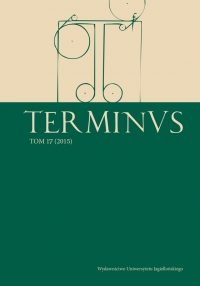Kształt edytorski postylli polskich XVI i XVII wieku – w poszukiwaniu staropolskich
konwencji wydawniczych
Early modern Polish postils: in the search of editorial conventions
Author(s): Magdalena KomorowskaSubject(s): Cultural history, Polish Literature, 16th Century, 17th Century, Biblical studies, History of Religion
Published by: Wydawnictwo Uniwersytetu Jagiellońskiego
Keywords: Old-Polish postils; early modern publishing; early modern typography; Reformation; Counter-Reformation;
Summary/Abstract: In 16th and 17th century Poland-Lithuania, vernacular postils, both Protestant and Catholic, were a powerful vehicle for religious reform and a useful tool in the confessional conflict. Between 1556 and the end of the 17th century, over forty editions of various postils (some of them multivolume) were printed. Together, they constitute one of the largest groups of surviving old-Polish publications connected by genre and published in the vernacular to reach a wider audience. For these reasons they are an excellent material for scholars interested in the development of the form of the Polish printed book. The paper begins with rectification of some widespread yet misleading convictions about Polish postils. Results of the author’s bibliographical research allows her to prove that Polish postils should not be associated with Reformation only, but rather should be seen as a universal instrument of confessional polemic and pastoral aid. The main body of the article focuses on the development and changes of the form of Early Modern Polish postils. Because of the similarities of structure and purpose of these publications, the author is able to compare solutions chosen by different printers in terms of format, layout, illustrations, title-page composition, etc. Focusing on the most infl uential volumes printed in Kraków, she presents how Polish printers adapted German book designs and introduced new patterns later on. Based not only on the analysis of postils themselves, but also on surviving correspondence and other archival materials, the author sheds some light both on the circumstances of production and on the author’s and the reader’s role in shaping the form of the postil as a book. The question of using typography and illustration to attract Catholic readers to Protestant postils and vice versa is also raised. Analysis of the material prompts the author to the conclusion that the printing craft was above religious divisions.
Journal: TERMINUS
- Issue Year: 17/2015
- Issue No: 3 (36)
- Page Range: 317-368
- Page Count: 51
- Language: Polish

